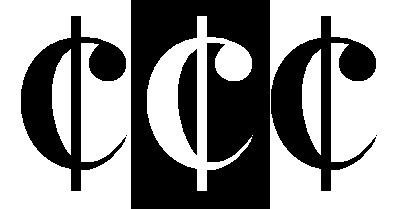7th November 2024: Trio Gaspard
Masterly Performance by Trio Gaspard at Chichester Chamber Concerts
One of the joys of attending a Chichester Chamber Concert is to hear familiar music by recognised composers played by World-leading players in the delightful setting of the Chichester Assembly Room. Another is to be introduced to previously unheard works by largely unknown composers. Sometimes the two go together. This was certainly the case on Thursday [7th November] when the visiting ensemble, Trio Gaspard, brought to Chichester a heavily Hungarian-influenced programme alongside some delightful Haydn.
The first half contained works by the 20th Century Hungarian composers Sándor Veress and Lászió Lajtha. Virtually unknown in this country, both are recognised as leading composers in their own land. Both either studied or collaborated with Bartók and Kodály. Indeed, Bartók described Veress as the greatest Hungarian composer of his day. Like their masters, both composers were imbued with the folk music of Hungary, Transylvania and Moldova.
The Trio Gaspard began with a work by Veress – Tre Quadri for Piano Trio. Each of the three movements was inspired by a painting; the first a landscape by Claude Lorrain, the second an Arcadian scene by Nicolas Poussin and the last a bucolic wedding party by Pieter Breughel. The first movement, depicting a dark sombre landscape, was introduced by the cello of Vashti Hunter, immediately demonstrating a deep sonorous tone – a notable feature throughout the whole evening. Marked con moto, the movement proceeded with fragmentary, recurring phrases from all three instruments which grew in intensity and then faded. The second picture, of idealised shepherds and a shepherdess gathered round a tomb inscribed with the phrase Et in Arcadia Ego, was suitably darker and featured Jonias Illias Kadesha’s violin in high register supported by the other players atonal interjections. The third, an altogether jollier depiction of peasants dancing at a wedding (and seemingly getting increasingly intoxicated) involved plucked cello notes and percussive piano playing by the excellent pianist Nicholas Rimmer, who was also required at one point to rap his knuckles on the piano lid! Altogether, not an easy piece for a first time hearing but the performance by Trio Gaspard was both robust and convincing. A random thought, but might the audience’s understanding, and appreciation, of it have been enhanced had they been able to view the three pictures depicted?
The Lajtha Piano Trio Op. 10 Trio Concertante was written much earlier (in 1928 as opposed to the Veress, which dates from 1963) when the composer was 35, and was more conventional in its harmonic approach. Later his works were more radical and employed extreme dissonance. The Op.10 trio calls for perfect, complex and complementary playing from all three participants and, as a Trio Concertante, also contains virtuoso solo cadenzas, all of which were accomplished with great aplomb by these hugely talented musicians. In the second movement in particular the cello has a long meandering solo passage (beautifully rendered by Vashti Hunter) over a busy piano accompaniment before the movement concludes in a rare moment of peace. The third movement begins with a boisterous piano solo joined, firstly, by the cello and then the violin in a lively canon soon interrupted by more random, fragmentary phrases. A rather jolly folk-like accelerando lead to a strong concluding statement.
Between these two works the Hungarian theme was maintained with performances of two of Brahms’ Hungarian Dances in arrangements by Nicholas Rimmer.
After the interval the second half of the concert showed the Trio Gaspard in a completely different light. Their performance of Haydn’s Trio in B flat major Hob: XV:38, and in their Haydn encore at the close of the programme, displayed a light touch and complete familiarity and comfort with this style of music. Their approach to Haydn appeared quite instinctive with crisp attacks, fluent shaping and the most delicate playing. Not surprising, then, to learn that Chandos have chosen them to record all of Haydn’s 46 trios over the next few years.
Returning to the Hungarian theme, the concert ended with a spirited performance of Franz Liszt’s Hungarian Rhapsody No. 9 Carnival de Pest. Composed in 1848, it pays homage to the gypsy music of Liszt’s homeland. Full of inventiveness and humour it begins slowly and gradually builds up the tension before a delayed resolution leads to the release of full momentum as it races to a conclusion. A huge feat of virtuosity, particularly from the piano and violin brought this piece to a triumphant conclusion. This was an evening of masterly instrumental playing that was much appreciated by the audience.
The next CCC concert will be given by Geneva Lewis (violin) and Llŷr William (piano) on Thursday 5th December.
Peter Andrews
